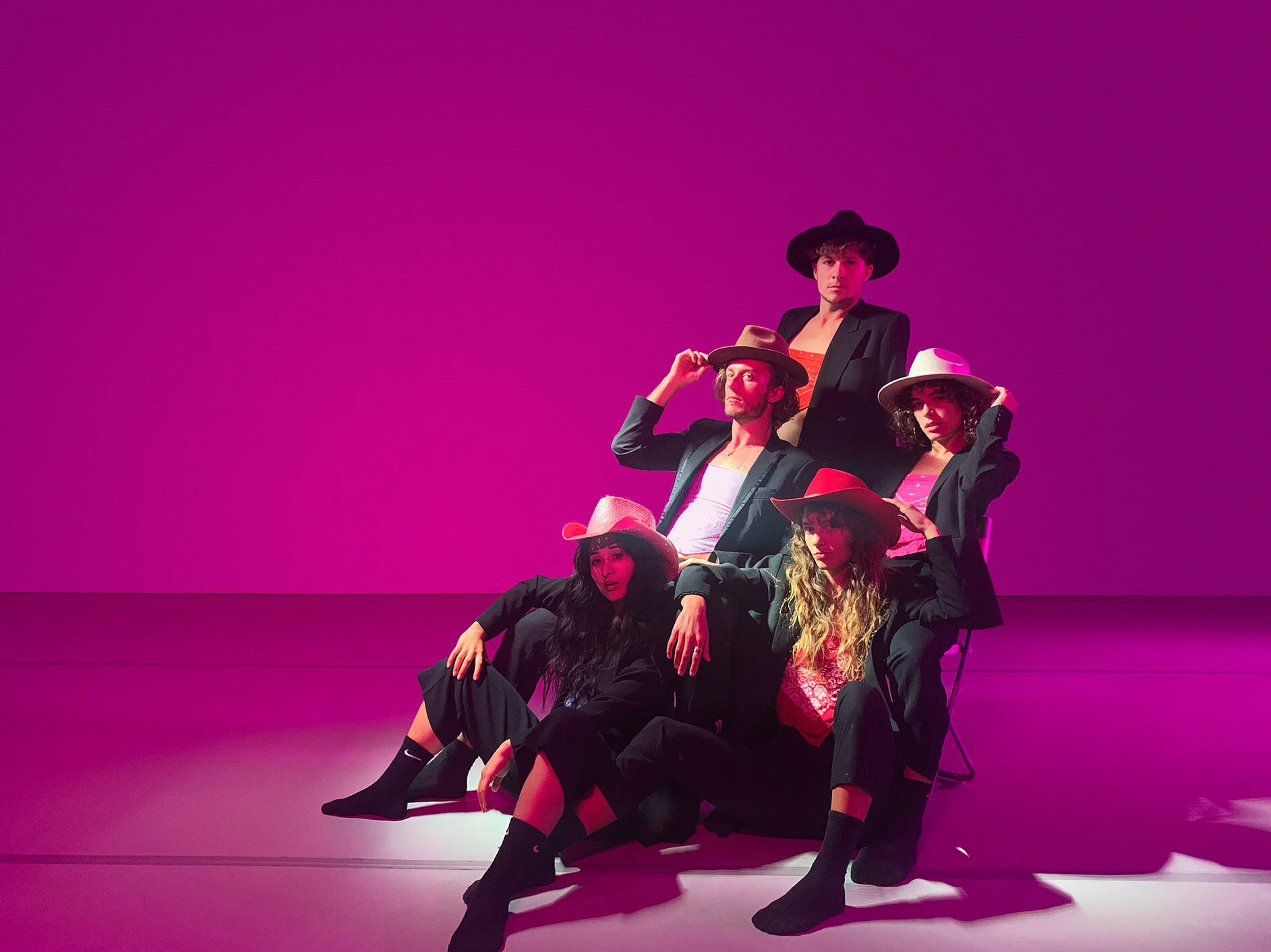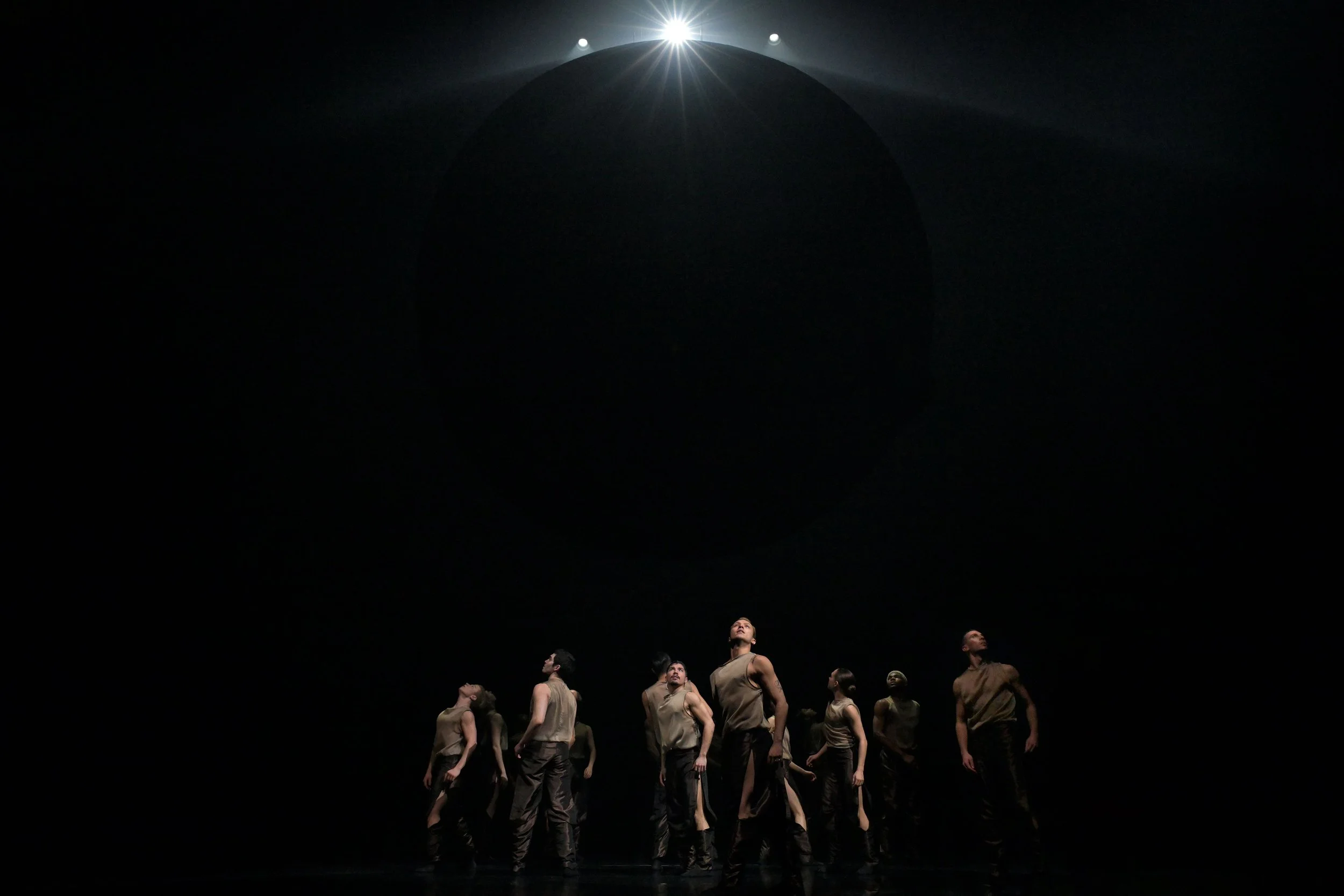2021 Vancouver International Dance Festival puts cinematic angle on contemporary choreography
The fully livestreaming fest means audiences have the best seat in the house
Hourglass by Ne Sans Opera & Dance launches the 2021 Vancouver International Dance Festival. Photo by Flick Harrison
The Vancouver International Dance Festival runs March 4 to June 19 online by donation.
WHEN COVID-19 lockdowns hit last March, the Vancouver International Dance Festival was eight performances into a 31-show program. The night before the staggering shutdown, its KW Production Studio was broken into, a mixing board, laptop, and other items stolen. It was a brutal period, and the performing arts continue to be hard hit by the effects of the pandemic. But as VIDF organizers Barbara Bourget and Jay Hirabayashi prepare to launch the 2021 event, they say that the last year has brought about some positive changes that are here to stay and that there’s much to be excited about.
The partners in life, art, and business are the founders of Kokoro Dance, which initiated VIDF in 1998. Speaking to Stir via Zoom from KW Studios in the Woodward’s heritage building on West Hastings Street, the two look back at the relatively fortuitous position they found themselves in as the pandemic was gripping the globe. Long before COVID-19 became a part of daily life, they had been working on upgrades to KW Studios and knew that the space would be ideal for video production for dance and theatre. With their pivot to online performances already in motion, they managed to update their grant applications to BC Arts Council and Canadian Heritage’s Canada Cultural Spaces Fund in the nick of time to include video equipment so they could invest in cameras, tripods, lenses, software—everything you’d need for professional livestreaming.
They hit the ground running.
Vidya Kotamraju will performs in VIDF 2021. Photo by Ron Sangha
By summer, they had initiated a subsidy program for equity-seeking artists funded in part by the Vancouver Foundation through which they offered up to 15 applicants a week of studio time, a day in the recoding studio, or a day livestreaming. Last fall, they picked up the 2020 edition of VIDF where it left off, streaming performances by Kokoro Dance, FakeKnot, and Farouche, works that had been reimagined from the stage to the computer screen.
“We were very pleased to discover that livestreaming offered a unique experience for viewing dance, one you can’t replicate in going to a venue,” Hirabayashi says. “When you go to venue, you’re stuck in one seat, with one perspective. Lots of time you’re so far away you can’t even make out the dancers’ faces. In the studio, we can get within inches of a face. We can shoot from the sides, from above or below or behind and give an intimate perspective you can’t experience in theatres.”
He compares the experience to watching a hockey game at home versus in an arena: you get far better views of the action from your couch than when you’re stuck in the nosebleeds, plus you’re that much more comfortable. (Of course, the performing arts are nothing like a “boring old hockey game”, Bourget chimes in.)
They were equally pleasantly surprised by how much they enjoyed the livestreaming experience as artists. For the pair’s performance of Reading the Bones, they had with them in the studio only their musician son Joseph Hirabayashi on switcher, KW Studios technical director Jessica Han, and four camera operators.
“I was really worried about the lack of physical presence of an audience,” Bourget says. “In a theatre, you can hear them settle into a state of readiness in the dark; you can hear them moving around or you can hear laughter or someone whispering, so there’s a very alive quality to that.
“But because of the intimacy of the studio, we had an intimate relationship with the cameras, and it was something we all enjoyed,” she says. “We couldn’t believe how magical it was, in fact. Even for an old bag like me who’s been dancing all my life, it was really exciting.”
While livestreaming has become much more common in the last year, what distinguishes VIDF broadcasts is that they’re live. Many other presenters pre-record performances then upload videos, sometimes editing them first.
“For our presentations in the fall for VIDF, we had four different nights and each one was live; that added the same kind of adrenaline for performers that they would have had in front of an audience,” Hirabayashi says. “You couldn’t make any mistakes; you had to live with whatever you put out on stage. There was that immediacy. I could feel the excitement.
“And we weren’t interested in replicating what they did on stage, which is flat and two-dimensional; it doesn’t pull you in,” he says. “We wanted them to reimagine work for the cameras.”
That’s exactly how things will unfold with VIDF 2021: slick cinematic perspectives of contemporary dance, with 18 livestream performances over the fest’s run from March 4 to June 19.
Broadcasting from KW Studios, the festival launches with Hourglass by Ne. Sans Opera & Dance March 4 and 5 at 8 pm and March 6 at 4 pm PST. The duet for Racheal Prince and Brandon Lee Alley is set to minimalist composer Philip Glass’s 4 Piano Études, which will be performed live by pianist and conductor Leslie Dala.
On April 29 and 30 and May 1, Lisa Mariko Gelley and Josh Martin’s Company 605 presents Brimming, a new solo for Martin investigating the body as a container, a hollow interior space that’s continuously shaped and reshaped.
Vancouver-based bharata natyam dance artist Vidya Kotamraju, a graduate of the Jai Govinda Dance Academy, presents Longing..., a two-part performance based on the universal themes of romantic and spiritual yearning for love, companionship, and oneness, May 6 to 8.
Yvonne Ng in In Search of Holy Chop Suey. Photo by Cylla von Tiedemann
Yvonne Ng, founder and artistic director of tiger princess dance projects, will perform In Search of Holy Chop Suey and Weave…part one from May 20 to 22. Born and raised in Singapore of Peranakan Chinese descent, Ng is a choreographer and arts educator.
WANTED is a fantastical exploration of humanity’s light and dark extremes told through the lens of the cowboy by CAMP, a collaborative artist-run entity. Look for themes of panic, blame, self-preservation, escapism, and indulgence in the work that streams May 27 to 29.
Finally, North Vancouver’s Lamondance, under the artistic direction of Davi Rodrigues, presents Before Dawn. A meditation on faith and hope, it livestreams June 17 to 19.
The fully digital program is one more accomplishment for VIDF, which, since its inception, has presented close to 300 companies, including 172 based in B.C. and 156 BIPOC artists, to more than 85,000 people. Ironically, the fallout of the pandemic has helped VIDF fulfill part of its mission.
“Livestream has enabled us to meet one of our original objectives that we’ve never able to reach before, and that is expose what’s happening in Vancouver worldwide,” Hirabayashi says. “Under normal circumstances, the only way you can do that is to get people to come to Vancouver. Now we can go wherever they are. We’re thinking we will probably aim to even do one livestream a month year-round, not just the during festival.
“Our festival manager just sent out an e-blast quoting something I wrote in 1992, where I said the future of dance would be through video,” he says. “I don’t remember writing it, but it’s true now. It just took 30 more years than I thought it would.”
Hirabayashi and Bourget—who have four children and five grandchildren ranging in age from seven to 12—have other big plans for the year ahead, though it’s uncertain how they’ll unfold. In the fall, they’re to be artists in residence at the Roundhouse Community Centre for the fifth time in a decade; the hope is for Kokoro Dance to present a new duet there with music by their son Joseph. (They may end up filming it at KW Studios if restrictions are still in place.) They’ve also tentatively booked Alonzo King LINES Ballet from San Francisco for October 29 and 30 at the Vancouver Playhouse, which will depending on venue operations and public-health regulations.
“I hope live performing arts never go away,” Bourget says. “A lot of people are online all the time, but I still prefer the textural quality of touching another human being and smelling them. I hope we can reach some kind of balance and that people don’t stop going to the theatre.”
The performing arts are, after all, a way of life for those who practise them and a source of inspiration, comfort, and relief to those who partake in and appreciate them. To help lift people’s spirits, all of the shows at the VIDF 2021 are free, with donations gratefully accepted.
“The City, the Province, and the feds have been very generous to artists, so we felt that we wanted to pass that on,” Bourget says.
Adds Hirabayashi: “We decided that with so many people out of work out that charging money to see art doesn’t really fit the circumstances right now. And it’s a spectacular lineup.”
CAMP photo by Yours Truly

















